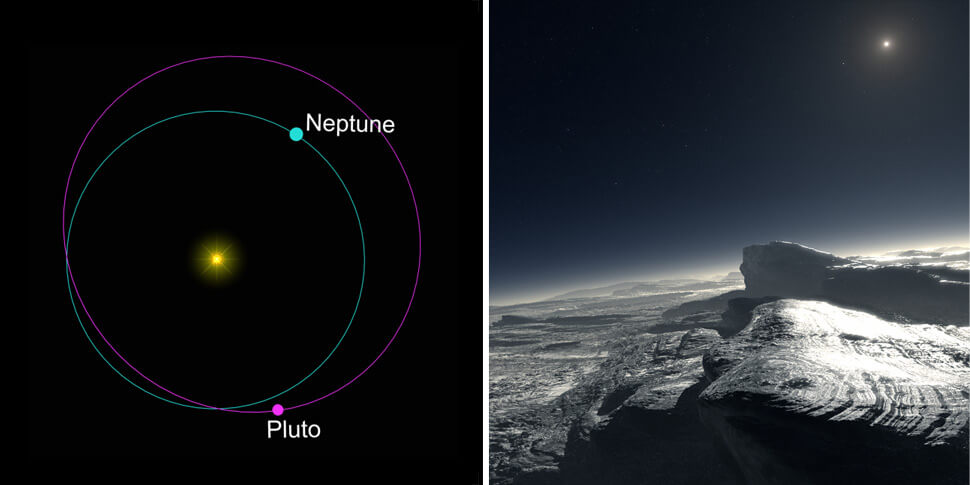
Interesting Neptune Planet Facts One day on Neptune goes by in 16 hours. Saturn takes a long time to revolve around the Sun because the further away the planet is from the Sun, the larger the orbit path. Neptune in Pisces most recently began in April of 2011 and will conclude in January of 2026.

Sometimes Neptune is even farther from the Sun than dwarf planet Pluto.

And Neptune makes a complete orbit around the Sun (a year in Neptunian time) in about 165 Earth years (60,190 Earth days). One day on Neptune takes about 16 hours (the time it takes for Neptune to rotate or spin once). All About Neptune | NASA Space Place – NASA Science for Kids the pull of the Sun is weaker because it has less mass (force of gravity is less) its orbit is longer accept – it travels further’ or ‘the orbit is bigger’ Unsurprisingly the the length of each planet’s year correlates with its … About the statistics of Neptune including, size, mass, temperature, and orbit and revolution length in time. Neptune its average speed is lower for most of its orbit. Its previous journey through Pisces occurred between April 1847 and February 1862, the years leading up to and at the beginning of … Log in for more information. It took about 165 Earth years to make one orbit around the Sun, since it is weakly bound by the Sun’s gravitational force at a distance of 2.8 billion kilometers. What is Neptunes revolution time? - Answers - Get the answer to this question and access a vast question bank that is tailored for students. The rotational period of Uranus’ is 17 hours and 14 minutes (compared to Earth time, a day on Uranus is approximately 17 hours and 14 minutes). Price: $199 Early Bird ($254 After February 20, 2021) Make room for BIG transformations in your yoga practice and in your life with this reinvented, revolutionary program. why does it take longer than the other planets to orbit the Sun.
#NEPTUNES REVOLUTION AROUND THE SUN SERIES#
This is the 3rd iteration of TheSecondLugia's "Super Drop" series of games first available in Arcade Island 1. The path a body follows is called its orbit. It is 38.87 times bigger and 17.132 times more massive than the Earth.Its volume is 57.7 times the volume of Earth which means that 57 Earths could fit inside of Neptune with a little room left over. It's atmosphere is dominantly hydrogen (80 per cent), with helium (19 per cent) and methane (1 per cent), and a very small admixture of other compounds. Neptune has 13 satellites, and a thin ring system that was discovered in 1984. The planet was discovered on Septemby Johann Galle and Heinrich d’Arrest from Berlin Observatory very near the predicted position, Devgun said. John Adams and Urbain Le Verrier carried out independent analysis of discrepancies in the observed and calculated positions of Uranus and predicted in 1845 the mass and orbit of the perturbing body. Unexplained deviations in the orbit of the planet Uranus, ever since its accidental discovery on Maby William Herschel, led astronomers to believe that there was some unknown body farther out. Neptune is also the first planet found by mathematical prediction rather than by observation, C B Devgun of SPACE said. Neptune will be in opposition on August 22, 2011, which means it will rise around when the sun sets in the west and shall be up all night, he said.

To watch the planet, see Capricornus and Aquarius constellations between the stars Delta Capricorni and Lambda Aquari to be precise, he said, adding, one needs a moderate sized telescope to view it.

The heavenly body will celebrate its birthday on July 13 at 03:06 IST when it reaches approximately the same heliocentric longitude 329°.1020 as at the time of its discovery, R C Kapoor of Indian Institute of Astro Physics said. Neptune - the blue coloured eighth planet of the solar system, will this year complete its first revolution of the sun since its discovery in 1846.


 0 kommentar(er)
0 kommentar(er)
